What does the Oklahoma state flag have to do with 'Killers of the Flower Moon?' A lot.
- Oops!Something went wrong.Please try again later.
- Oops!Something went wrong.Please try again later.
In the spring of 1925, the Oklahoma Legislature voted almost unanimously to adopt a new design for the state flag: An Osage bison-hide shield that artist Louise Funk Fluke had depicted on a field of blue.
"The Senate voted unanimously, and there was one negative vote in the House, only because one legislator was suspicious that the crosses on the shield referred to Catholics," said Jeff Briley, director of collections at the Oklahoma History Center.
"The legislation goes into the fact that the old flag was a failure and adopts the new flag — and then adds an emergency clause to make it effective immediately."
In the Osage Nation in northeast Oklahoma, a real emergency was taking place in 1925, as the U.S. Bureau of Investigation — the precursor to the FBI — was less than a year into its investigation into the serial slayings of the tribe's citizens, who had become rich through an oil boom that would produce more wealth than all of the American gold rushes combined.
The murders, which became known as the "Reign of Terror," are the real-life basis of Martin Scorsese's latest cinematic epic, "Killers of the Flower Moon."
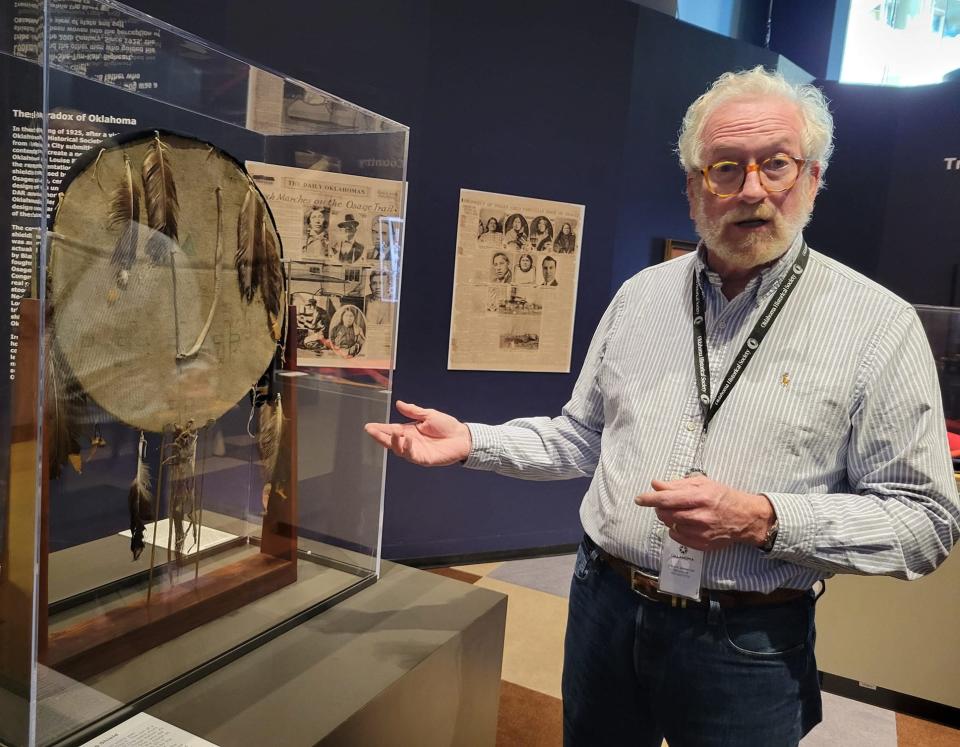
Ahead of the highly anticipated film's Oct. 20 global theatrical release, the Oklahoma History Center has unveiled a new pocket exhibition titled "Trust and Betrayal in Osage Country," exploring the paradox of a state that goes to great lengths to honor its tribal heritage while one of those tribes simultaneously is having its citizens systematically killed.
"It's this yin and yang of over here we're putting the Osage (shield) on our flag at the same time that they're being murdered. How do you wrap your arms around that? How do you wrap your head around it?" said Oklahoma Historical Society Executive Director Trait Thompson.
'Killers of the Flower Moon' based on a true, dark chapter of Oklahoma history
Filmed in and around the Osage Nation in 2021, Scorsese's fact-based Western is adapted from David Grann's 2017 National Book Award finalist “Killers of the Flower Moon: The Osage Murders and the Birth of the FBI."
With its starry cast and reported $200 million budget, "Killers of the Flower Moon" is one of the biggest movie productions ever undertaken in Oklahoma. But in centering on the Reign of Terror, the film also is chronicling one of the darkest chapters in the Sooner State's complicated history.
"For Oklahomans, the events that are portrayed in 'Killers of the Flower Moon' really aren't surprising, because we know about the history of the exploitation of Native Americans in our state — and that is not just in Osage County. ... That is in the original Indian Territory where the Five Tribes were settled," Thompson said.
'Reign of Terror' in Oklahoma: The harrowing history behind a string of Osage murders
"During the allotment process, there was every kind of trick of graft and greed that was used to try and basically swindle land out of the possession of Native Americans and get it into white settler hands. So, what happened in the Osage Reservation in the 19-teens and 1920s was just a continuation of what had been happening since the 1830s, '40s and '50s in the rest of Indian Territory."
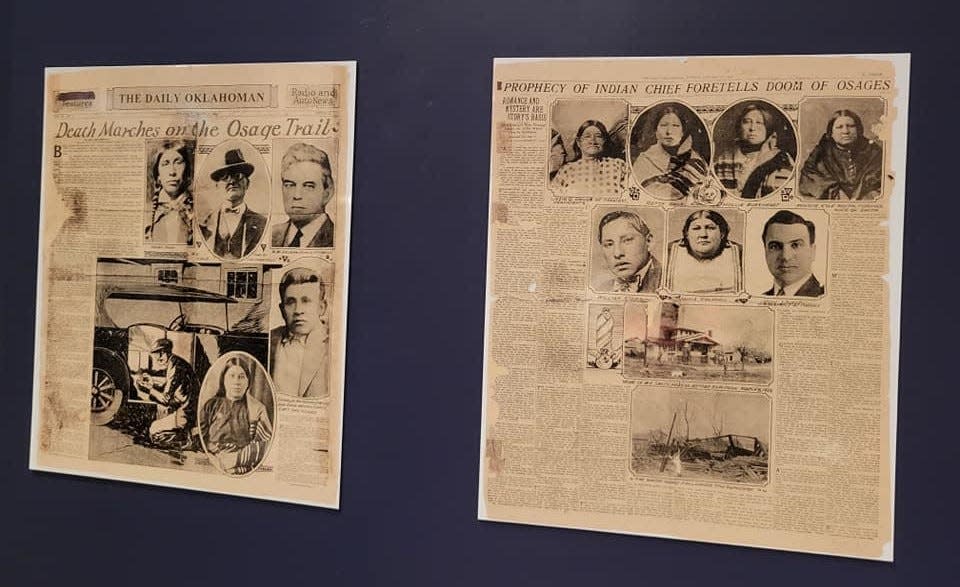
Like Grann's New York Times best-seller, Scorsese's movie centers on Mollie Kyle Burkhart (Native American actor Lily Gladstone, who is NiMíiPuu, or Nez Perce, and Siksikaitsitapi, or Blackfeet) a real-life Osage woman who lived on the tribal settlement of Gray Horse, near Fairfax. During the Reign of Terror, she and her family were marked for death in a vicious scheme to swindle away their oil money.
Academy Award winner Leonardo DiCaprio portrays Mollie's treacherous husband, Ernest Burkhart, who is caught between his love for his wife and the deadly plot masterminded by his uncle, William K. Hale, played by fellow Oscar winner Robert De Niro.
"What David Grann did in his book 'Killers of the Flower Moon' was expose this to a wider audience and open people's eyes to just the lengths that some people would go to become wealthy on the backs of other people — including systematic murder," Thompson said. "It's a good thing that the world is learning this story, and as many people as read the book, that many more people are going to see the movie and be exposed to this."
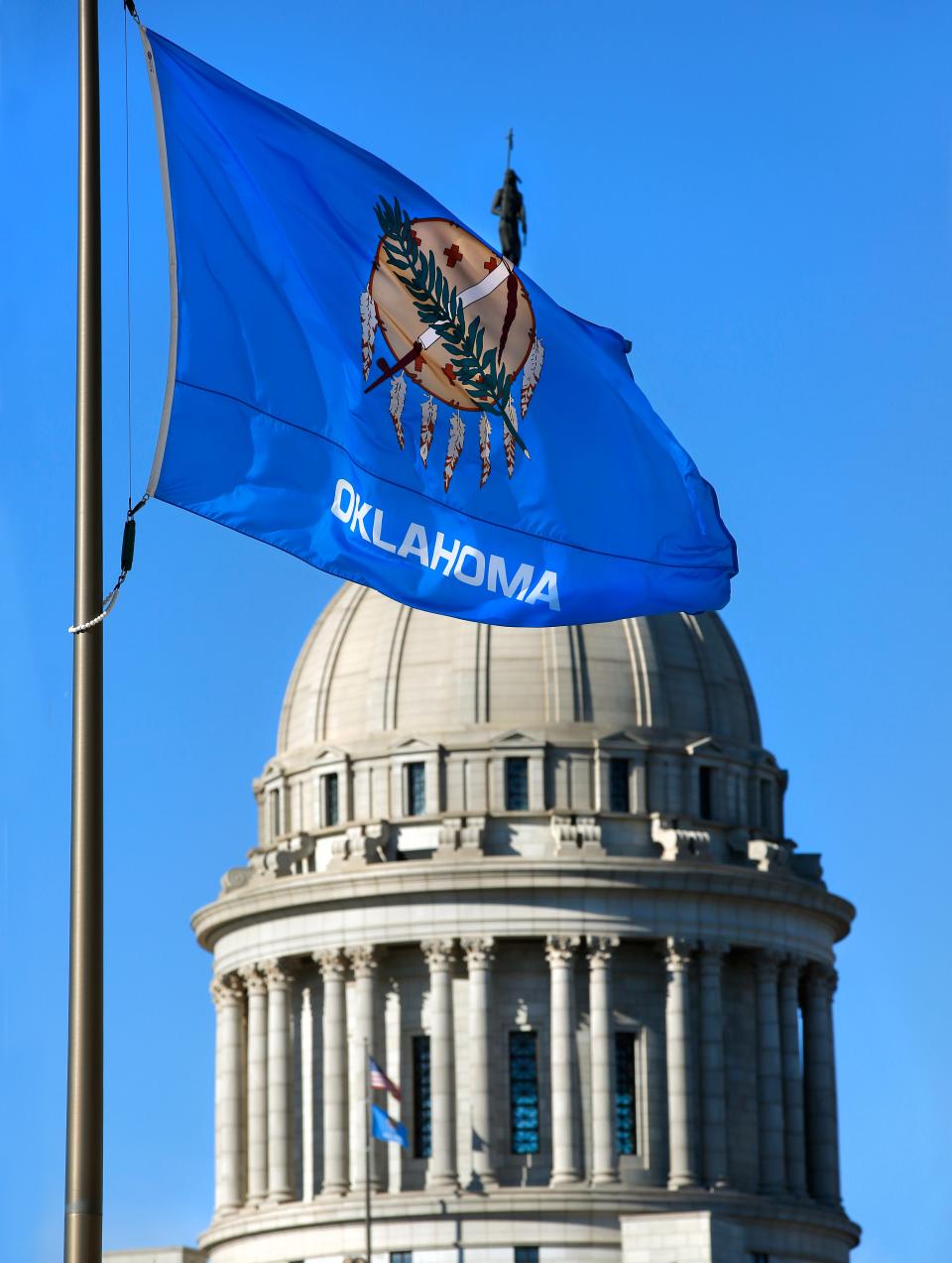
How is the history of the Oklahoma flag tied to 'Killers of the Flower Moon?'
In 1925, Oklahoma had a problem with its state flag. Adopted in 1911, the first flag featured a white star surrounding the number "46" — for Oklahoma's status as the 46th state added to the United States — against a red field.
"By the 1920s, that much red on a flag smacked of socialism — and nobody really liked the flag anyway, because it was blah. It didn't say anything in particular," Briley said.
"By 1924, everybody was like, 'We've gotta do something better.'"
So, the Oklahoma Daughters of the American Revolution organized a statewide contest for a new design for the state flag.
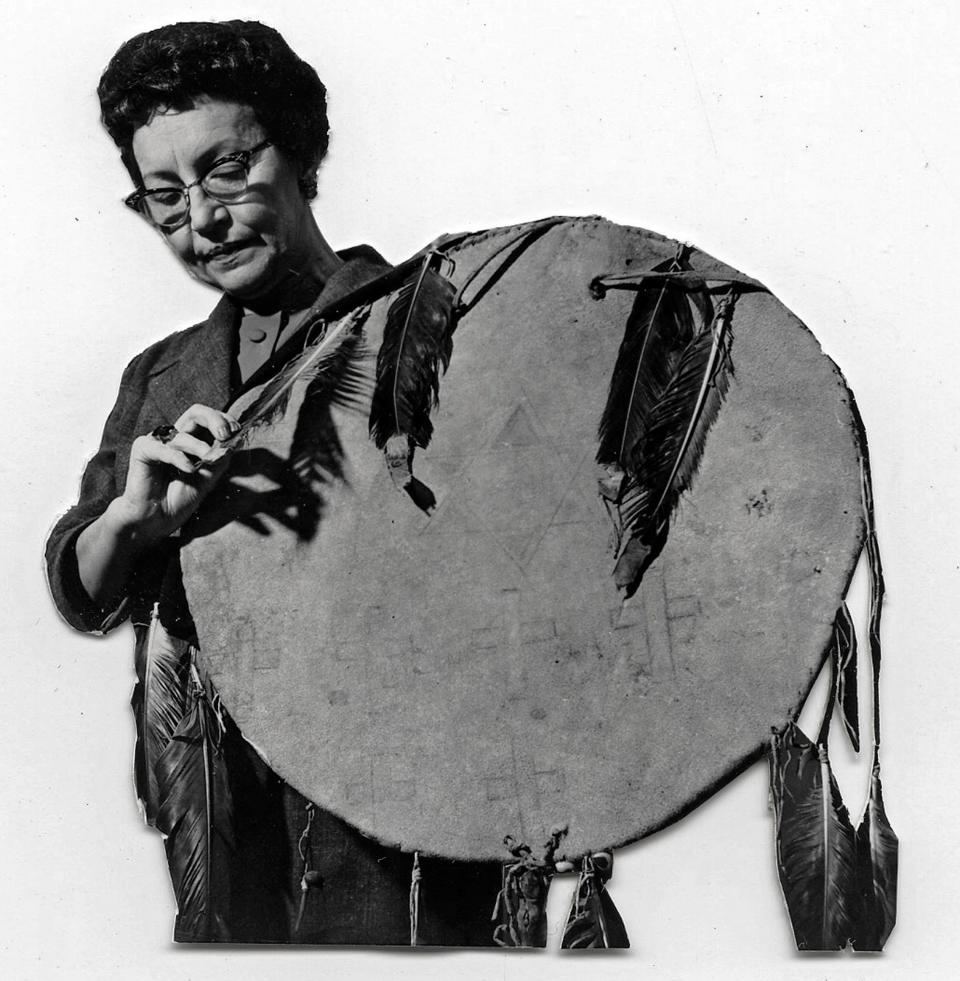
Born in Van Buren, Arkansas, but raised in Shawnee, painter Louise Funk Fluke had recently returned to the Sooner State from studying art at Columbia University and the Chicago Art Institute. Determined to enter the DAR's flag contest, the Ponca City-based artist delved into Oklahoma history and Native American heritage, consulting with Joseph B. Thoburn, then secretary of the state Historical Society.
"She came down to the Historical Society doing research ... and they walked through, looked at the historic flags and looked at artifacts in the museum. And this shield was on the wall — and ultimately, that became the central figure of the state flag of Oklahoma," Briley said.
More: For 'Killers of the Flower Moon's' Lily Gladstone, Oklahoma was 'a different version of home'
Known as "The Black Dog Shield," the artifact that captured Fluke's attention — and ultimately became the centerpiece of her winning flag design — was the heavy double-sided shield owned and carried by Black Dog II, the son of famous Osage leader Black Dog (circa 1780–1848).
"Black Dog II was no slouch himself: He fought in the Civil War as a young guy. By the 1870s, he was part of the leadership of the Osage. In 1875 ... he was on a delegation they did to Washington, D.C., to talk with Congress about the concept of territory. This is three years after, essentially, the Osage established the area that they're in now as their own reservation," Briley said.
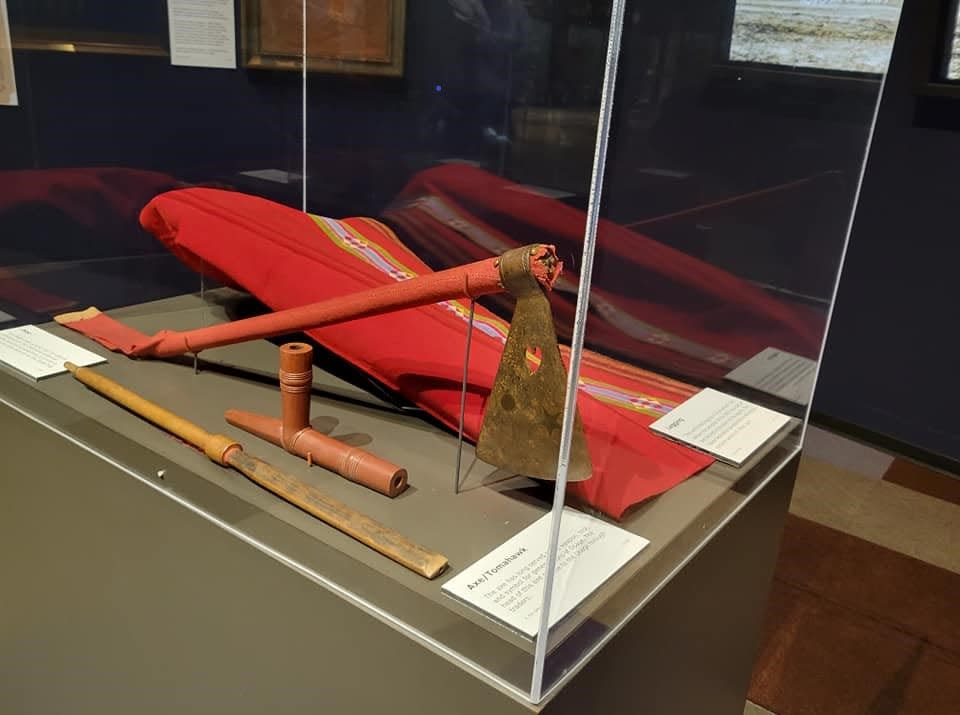
What is included in the Oklahoma History Center exhibit?
The original "Black Dog Shield" remains a part of the state Historical Society's collection and is the centerpiece of the exhibit "Trust and Betrayal in Osage Country."
The side of the shield that became the basis for Fluke's winning design includes crosses that are not Christian symbols but rather represent stars.
"With the sun in the middle, this is probably the constellation Pleiades. There are loads of things about this that are entirely personal that we will never have an understanding about what they meant to Black Dog," Briley said.
"We see this as the symbol of Oklahoma ... but this was a representation of him. To have something associated with a real person — not just a generalized symbol — who was significant in Osage and Oklahoma history is a tremendous thing."
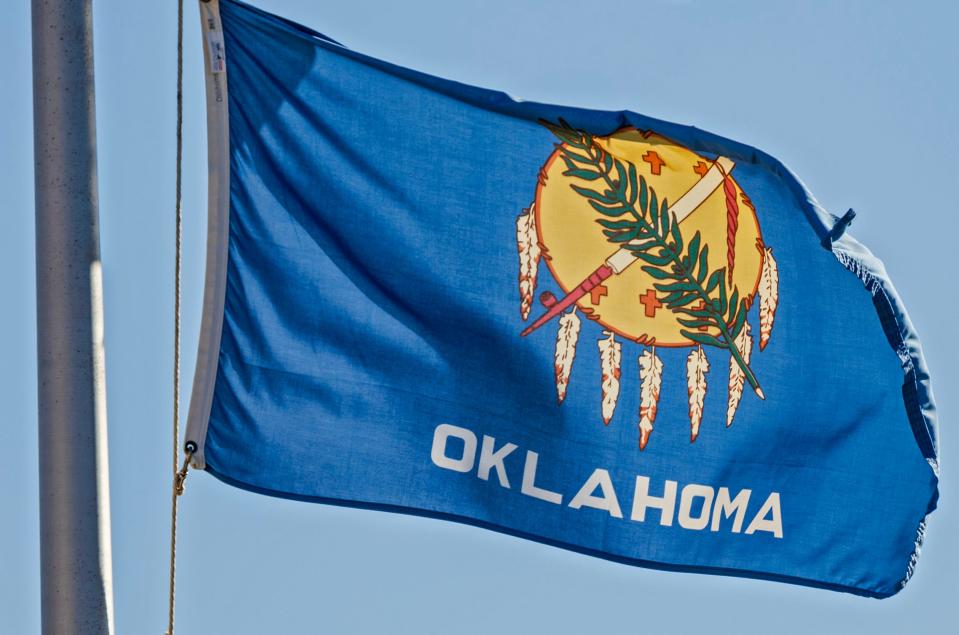
Now sometimes called "the Betsy Ross of Oklahoma," Fluke depicted Black Dog II's shield adorned with eagle feathers and with a crossed peace pipe and olive branch in front of it.
Except for the addition of the word "Oklahoma" in white lettering in 1941, her flag design has remained unchanged since it was adopted in 1925.
"That was a tremendously transitional time for all of the Native tribes here in Oklahoma, but for the Osage, particularly," said Leon Natker, the new director of the Oklahoma History Center.
"What should have been a really good news, happy-ending story ended up, as we see in 'Killers of the Flower Moon,' as this almost gothic horror novel. If we didn't know it really had happened, we'd read it and go, 'Well, that's a lot of fiction. That's an interesting story. Only in a book.' But as someone much wiser than myself once said, truth is often stranger than fiction."
Tucked in among the other Native American displays inside the Oklahoma History Center's first-floor ONEOK Inc. Gallery, the small exhibit "Trust and Betrayal in Osage Country" also features reproductions of newspapers and photographs from the Reign of Terror, plus artifacts like a pipe, tomahawk and unfinished broadcloth leggings that are similar to those that will be seen in the movie.
Members of the film's production team visited the Oklahoma City museum while preparing to make "Killers of the Flower Moon," Thompson said.
"Cinema has a way of reaching into the heart, because you're seeing those events take place. So, it almost feels like you're going to be in that experience for a little bit — and it's going to open up these stories to a wider audience," he said.
"That's the value of knowing history: We try to learn from our history, because hopefully, as an advanced society, we want to do better. We want to treat people better, we want to be better people, and, hopefully, next generations will learn from this and say, 'Now, we have an opportunity maybe to correct some of the wrongs of the past, by changing our actions in the future.'"
'TRUST & BETRAYAL IN OSAGE COUNTRY'
When: Through March 1.
Where: Oklahoma History Center, 800 Nazih Zuhdi Drive, Oklahoma City.
Information: https://www.okhistory.org/historycenter.
This article originally appeared on Oklahoman: 'Killers of the Flower Moon' true story ties into Oklahoma's flag

